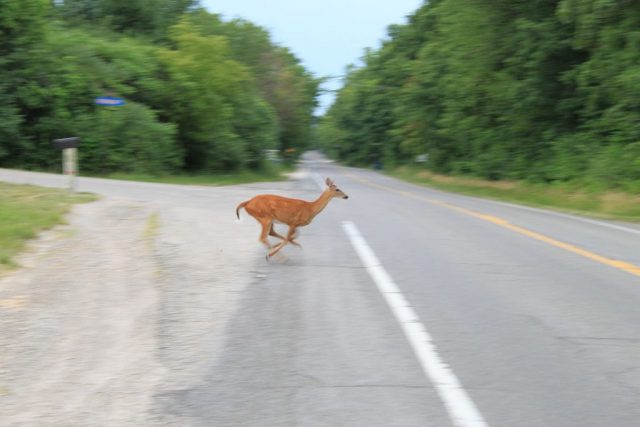
OHIO — November 2025 — Deer mating season, known as the rut, is in full swing across Ohio, and wildlife officials are warning motorists to stay cautious as deer activity spikes through the next several weeks.
Running from October through December, the rut reaches its peak in early to mid-November, when deer are most active — particularly at dawn and dusk. This heightened movement dramatically increases the risk of vehicle-deer collisions, which already account for 17,000 to 20,000 crashes each year in Ohio. Roughly half of those incidents occur during these three months.
“The rut makes deer far more unpredictable,” officials note. “Bucks are focused on chasing does, not traffic, and they often dart across roads without warning.”
During courtship, bucks pursue does for several days before mating, often guarding them from rivals. After breeding, males continue searching for additional mates until the rut winds down in December.
“Being alert, driving safely, and keeping your eye on the road may help reduce your chances of being in a collision with a deer during the fall breeding season.”
- Slow down. Watch for deer especially around dawn and between the hours of 6 p.m. and 9 p.m., when they’re most active.
Be aware. Look out for deer-crossing signs and wooded areas where animals are likely to travel. If you travel the same route to and from work every day, you may find deer consistently grazing in the same fields. Make a mental note of when and where you regularly see the animals. - Be alert. If you see an animal on the side of the road, slow down. At night when traffic permits, put on your high beams for improved visibility.
Brake, don’t swerve. Swerving to avoid an animal can put you at risk for hitting another vehicle or losing control of your car. It can also confuse the animal as to which way to go. Instead, just slow down as quickly and safely as you can. Your odds for surviving an accident are better when hitting an animal than hitting another car. - Assume they have friends. The “where there’s one, there’s usually more” often holds true. Deer travel in groups, so if you see one run across the road, expect others to follow.
- Don’t rely on deer whistles. These are aftermarket devices that some drivers put on their front bumpers to scare off animals. But animal behavior remains unpredictable, even if you use one of these.
- Buckle up. A seat belt is your best defense for minimizing your risk in a crash. An Insurance Institute for Highway Safety study found that 60 percent of the people killed in animal-vehicle collisions weren’t wearing their seat belts.
Following a gestation period of about 200 days, fawns are born between mid-May and July. Young deer typically remain with their mothers for 10 to 12 weeks before becoming independent.
Drivers are advised to slow down in rural areas, use high beams when safe, and remain alert near fields and wooded areas — especially at dawn and dusk — to avoid potential collisions.










